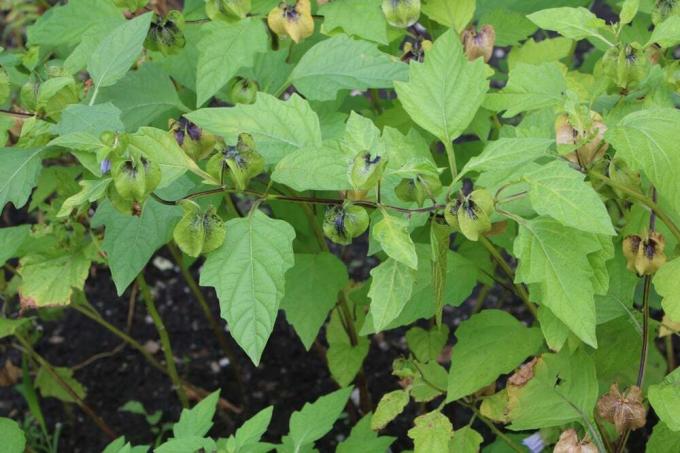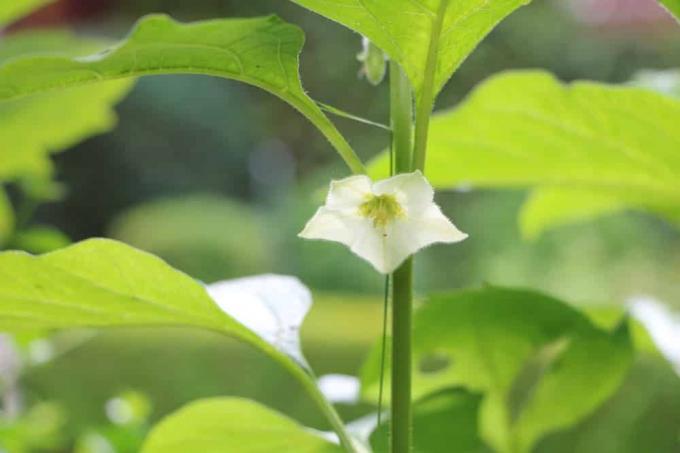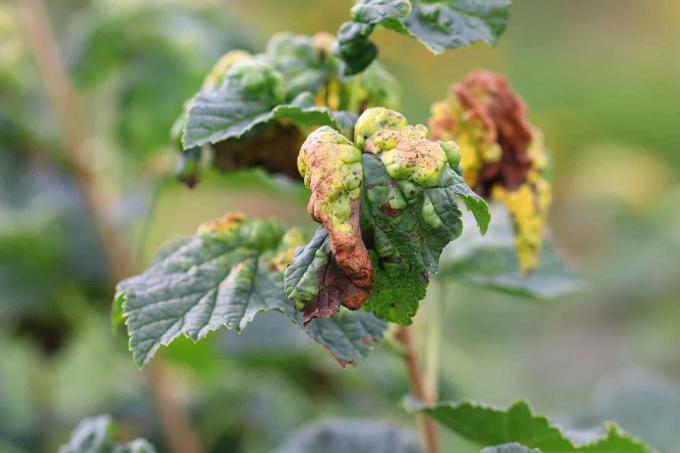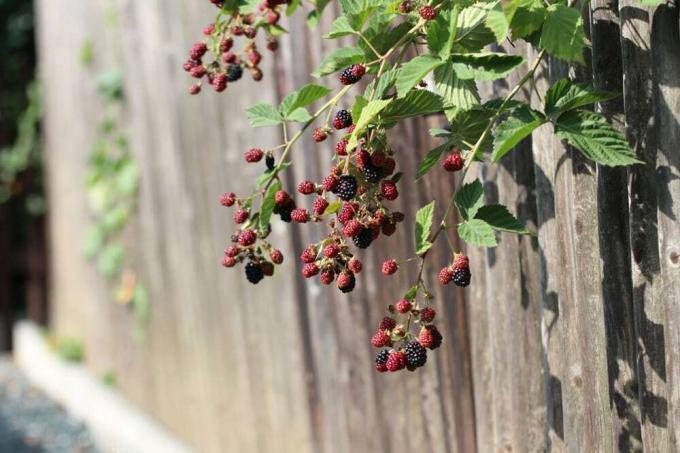

Table of contents
- Origin
- The encased fruit
- Dry physalis
- ingredients
- vitamins and effects
- Vitamin A
- Vitamin B1
- Vitamin B2
- Vitamin B6
- vitamin C
- Other ingredients and effects
- Against diseases
- External use
- Conclusion
The decorative fruits of the Cape gooseberry or physalis are often used to decorate desserts, cakes or cocktails. But the berry fruit can do much more, because it is very healthy, very rich in vitamins and, above all, delicious. Originally from Peru, the fruits are now mainly grown in South Africa. Because of its origin, it is also known as the Andean fruit. How healthy the fruit really is and what it can do is briefly explained in the following article.
Origin
The name Andean berry, as the physalis is also called, already reveals its origin. Because it originally comes from the highlands of Chile and Peru. The name Cape gooseberry also has a meaning of origin. This is how the Portuguese seafarers discovered in the 19th century. Century the fruit and brought it to South Africa, where the plants spread to the Cape of Good Hope. Today, however, the plants can also be found in the local latitudes, although South Africa continues to be the main growing area for the fruits commercially available here.
The encased fruit
The name physalis was given to the tasty fruit because its petals envelop it like a cloak during and after ripening. The petals grow together. When the fruit is ripe, the leaves look like dry, orange paper, giving it that ornamental look. However, the actual fruit is in this shell as a small, red berry. This has a diameter of only one to two centimeters. Otherwise, the Physalis has the following characteristics:
- Very cute outside
- soft, very sticky peel
- Inside are about 100-180 small, light-colored seeds
- these are also edible
- have an aromatic citrus flavor
- this combination makes it bittersweet to sour overall
Tip:
Physalis has an intense sour-sweet taste that some connoisseurs compare to the taste of kiwi, gooseberry, pineapple or passion fruit.
Dry physalis
Not only the fresh fruits from South Africa are offered in the trade, which are mainly in season from December to July. Cape gooseberries are also increasingly being offered from local growing areas. Here they ripen between August and October. This means that ripe, fresh fruit can be used almost all year round. The physalis, once harvested, does not ripen and should therefore always be eaten immediately, otherwise it will spoil. Like the raisins from grapes, the fruit is also suitable for drying and can thus be preserved. When drying the fruit, the following must be observed in particular:
- through drying, the outer skin becomes almost transparent
- the seeds shimmer through the fibrous shell
- the water content is significantly reduced
- this is how it is preserved
- Nutrient density is retained through gentle drying processes
- the taste can also be preserved in this way
- Temperature during drying must be 45° Celsius
- Place fruit in an oven and set the temperature precisely
Tip:
After drying, the fruits should cool down well and then be kept in a dry and not too warm place. They are durable and can be used again and again in the kitchen.
ingredients

The low-calorie and low-fat physalis unfolds its ingredients above all when it is fresh. However, it does not reach peak values here, but it provides a good basis for healthy nutrition. It contains the following valuable vitamins in 100 grams of fresh fruit:
- 0.06 mg vitamin B1
- 28 mg vitamin C
- 0.04 mg vitamin B2
- 0.05 mg vitamin B6
- 0.5 mg vitamin E
- 8 µg folic acid
- 150mcg retinol
- 900 µg carotene
- 0.1 µg biotin
- 2583 mcg niacin
- 0.2 mg pantothenic acid
But not only the vitamins make the physalis so attractive and healthy, also the many minerals, contained here have a positive effect on the whole when enjoying the delicious berries Body. 100 grams of physalis contain the following minerals:
- 5 mg sodium
- 170 mg of potassium
- 10 mg calcium
- 8 mg magnesium
- 40 mg phosphate
- 1.3 mg iron
- 0.1 mg zinc
In addition, there are 13 g of carbohydrates, 2 g of dietary fiber and protein, also with 2 g per 100 grams of fruit. With its 53 kilocalories, physalis is also considered to be very low in calories.
Tip:
Physalis contains a lot of vitamin C, which the body needs for many metabolic processes. In addition, the fruits have a large proportion of beta-carotene, which is good for your eyesight.
vitamins and effects
Physalis contains many vitamins, all of which have a different effect and function on the human body and are therefore healthy for humans when they work together.
Vitamin A

Even if only about 30 grams of the delicious fruit are consumed daily, this already covers about 45% of the daily vitamin A requirement. Vitamin A is made up of carotene and retinol. This is responsible for many functions in the body. This includes, above all, strengthening the immune system and thus protection against diseases and infections. In addition, vitamin A is said to have the following effects on the human body:
- Supporting vision at dusk
- for healthy mucous membranes
- good for treating various skin diseases, e.g. B. acne
- against viruses in the respiratory tract
- against measles
Vitamin B1
This vitamin is also called the anti-stress vitamin. Above all, it ensures a good and healthy nervous system and also the muscle tissue as well as that The immune system is strengthened and the body is better able to deal with external factors that trigger stress counteract. Those who take too little vitamin B1 often suffer from irritability, fatigue, abdominal pain and even depression.
Vitamin B2
This vitamin is also called riboflavin and is needed above all for healthy and stable hair, nails and skin. It is also required for the breakdown of fat, protein and carbohydrates. Anyone who suffers from a vitamin B2 deficiency can easily identify this with sensitivity to light, eye diseases, digestive problems and fatigue. Vitamin B 2 helps with a regular intake especially against:
- Cataracts, which cause cloudy vision
- Migraine frequency can be reduced by up to 50%
Vitamin B6
Anyone who suffers from a vitamin B6 deficiency is often affected by irritability, depression and confusion, and vitamin B6 anemia can also develop. Consumed regularly, it helps the body support the following functions:
- forms antibodies that are necessary to fight diseases
- ensures normal functioning of the nerves
- forms hemoglobin
- splits proteins
- this is how the blood sugar is balanced
vitamin C
Vitamin C is the best-known vitamin, which above all strengthens the immune system and thus offers better protection against viruses and bacteria. But the vitamin can do much more:
- wounds heal better
- Cholesterol levels are lowered
- Cell life is extended
- Protection against cardiovascular diseases
- Protection against strokes
- protection against cancer
- Production of collagen for firm skin
Tip:
According to a study, people who consume a lot of vitamin C have a better complexion. Wrinkles are less noticeable and age-related dry skin can also be avoided.
Other ingredients and effects
As can be seen from the many ingredients and vitamins, physalis is an excellent source of vitamin C, niacin, phosphorus and beta-carotene. But above all, the high protein content, which is higher than the goji berry, which is known to be very rich in protein, supports it Above all, muscle building, stimulates cell growth and can therefore also be used to help with weight loss and a diet be. The high phosphorus content, on the other hand, helps the body to build up teeth and bones, and the energy from food can also be better released through the absorption of phosphorus. The contained pectin, which is mainly found in local apples, has the following effect:
- is considered a natural gelling agent
- regulates digestion
- lowers the blood sugar level
- it also lowers the cholesterol level
- bad cholesterol in particular is reduced by pectin
- The body's own immune system and defenses are strengthened
- this can prevent the spread of cancer cells
Melatonin is also contained in the healthy berry. This has a stress-reducing effect on the human body, the biorhythm comes back into harmony and sleep disorders can also be eliminated in this way.
Against diseases

The Aztecs already knew the healing and beneficial effects of physalis and used it against many diseases. So today it is known that the fruit mainly because of its many small seeds inside in Larger amounts eaten has a laxative effect and is therefore a good remedy for indigestion is used. So if you regularly include the delicious berries in your diet, you can achieve a good intestinal flora. But there are other diseases in which the Cape gooseberry can be used to help. These include above all:
- diabetes
- due to the laxative effect, toxins are eliminated
- hepatitis
- malaria
- can even be used to support various types of cancer
- metabolic diseases
- asthma
- rheumatism
- Support of the body's immune system
Tip:
Physalis can be incorporated into the daily menu. They can be eaten fresh or processed in a fruit salad or fruity smoothie. When dried, they are particularly popular in muesli or in homemade muesli bars.
External use
Physalis can also be used externally, especially in the case of skin irritations, wounds and inflammation of the skin, it has a beneficial and healing effect. There are already tinctures with the active ingredients of the fruit on the market.
Conclusion
If you regularly include physalis in your diet, you can count on more energy. Because the berries support cell metabolism and thus ensure a good sense of well-being. The body's energy level is increased and mental performance increases. Added to this is the stabilization of blood sugar and protection against cell damage. This cell damage is mainly promoted by external factors such as the environment, industrial waste, smoke and exhaust gases as well as food and can lead to health problems. Regular intake of healthy physalis with its antioxidants can counteract this cell damage. In addition, the roughage helps to keep the cholesterol level and blood sugar at a constant level and at the same time signals the stomach to feel full for longer. The delicious physalis are not only very healthy and support the body in its own functions, but can also help you lose weight. If the fruits are therefore incorporated into the daily menu, whether dried or used fresh, well-being is increased and many diseases are counteracted from the outset.
 garden editorial
garden editorial I write about everything that interests me in my garden.
Learn more about soft fruit

Leaf diseases on currants: leaf fall disease & Co
Diseases on the leaves are not uncommon in currants. They are triggered by fungi, viruses or various pests settle in. Many problems can be remedied with simple home remedies. Proper care also helps to prevent many diseases.

10 good neighbors of raspberries | mixed culture
Raspberries should grow healthily for several years and bring us a rich harvest every time. Choosing a good neighborhood helps to achieve this goal. But with whom does the berry plant like to share the bed and with whom not?

Honeyberry, Lonicera kamtschatica: 12 tips on location & care
In the local latitudes, the robust honeyberry can be cultivated and propagated well, as it does not make great demands on the site conditions and care measures. If you pay attention to certain factors when planting and cutting, you can already harvest sweet fruits in spring.

Cultivated blueberries: 4 important location criteria
The blueberry offers delicious fruits and is a visually appealing tree. However, the cultural form of the blueberry differs greatly from the demands on its location compared to its wild relatives. In the right location, cultivated blueberries can yield several kilos.

Blackberry location: 4 important criteria
Blackberries are a popular sweet fruit that is easy to care for. With a suitable location, plant health is guaranteed and the yield can be increased. The right location depends on the type of variety, because not every blackberry is insensitive to low temperatures.

Fighting lice on currants | 8 home remedies to get rid of aphids
When the first leaves appear on the currants in spring, there are often aphids on the bushes. The small insects are hidden under the leaves and can quickly cause a lot of damage. Therefore, lice should be combated at an early stage, ideally with natural home remedies.



